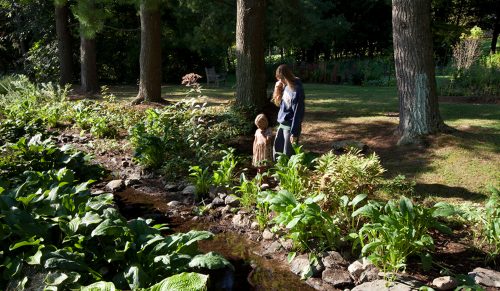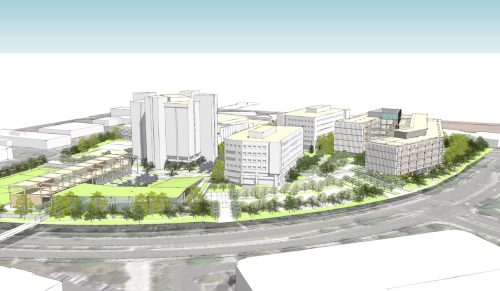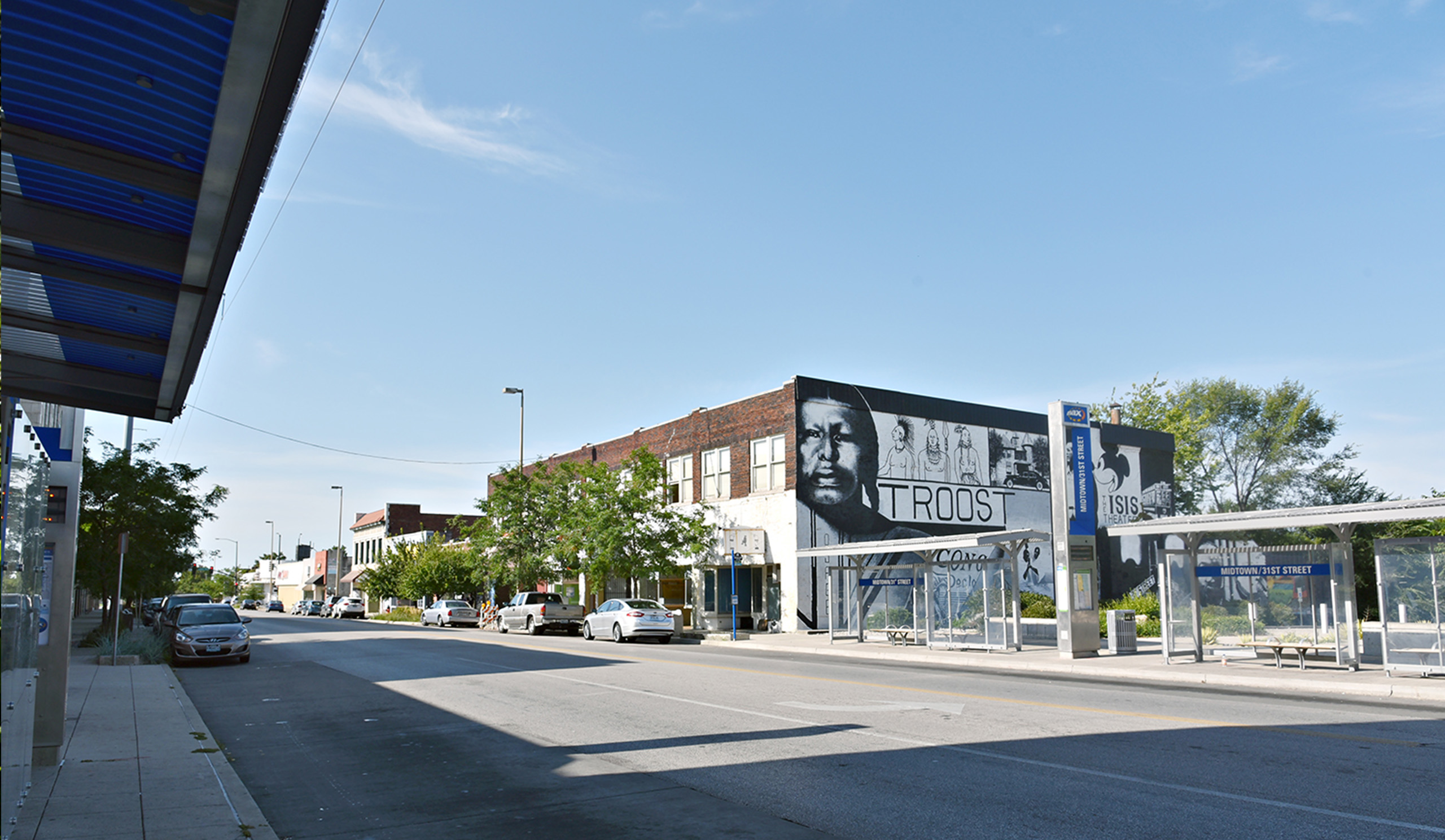
Defining “Good” Development at 31st and Troost
Troost. The name looms large in Kansas City’s conscience. It is a symbol of racial and economic segregation and public and private disinvestment. For residents up and down Troost Avenue, the street also symbolizes a deep and lively culture; one that embodies life’s complexities, joys, struggles, and sense of community. One that stands in stark contrast to the prevailing stereotypes. Changes are happening along the corridor, and at the intersection of 31st Street and Troost Avenue. Multi-family housing is going up to the north. Ruby Jeans, a black-owned juice and healthy foods café, relocated to the area. Non-profit organizations Operation Breakthrough and Reconciliation Services have recently completed renovations. Most importantly, 31st and Troost was recently named one of three priority areas identified for study in the Kansas City Catalytic Urban Redevelopment (KC-CUR) Implementation Strategy.
Even with these changes, there is more work to be done and questions remain. Who will future development serve? What will the potential side effects be? How can a plan ensure or create a more equitable future? In a recent visit to Kansas City, Local Initiatives Support Corporation (LISC) CEO Maurice Jones spoke about LISC’s work in disinvested communities across the country. He noted that to revitalize these neighborhoods responsibly, we need “investors and developers to be ‘good.’ ” Who will define what “good” is for the 31st and Troost priority area? And how is that “good” achieved?
BNIM—in partnership with LISC Kansas City, Urban Neighborhood Initiative (UNI), and community stakeholders—attempted to answer these questions in the Revitalization Scenario for the 31st and Troost KC-CUR Priority Area. BNIM was tasked with creating the planning document that would reflect stakeholder input, integrate with existing plans and initiatives, outline a development plan, and identify catalytic projects. The process included conducting community engagement with diverse stakeholder groups and distilling guiding principles that led to creating an aspirational but achievable development plan with comprehensive implementation strategies.
COMMUNITY ENGAGEMENT
Meaningful community engagement, and emphasis on creating a vibrant space that serves the needs of the existing communities on both sides of Troost. –COMMUNITY STAKEHOLDER VISION
The 31st and Troost priority area includes seven city blocks and Troost Park; this encompasses several stakeholder groups, seven neighborhood associations, a commercial corridor, and a large group of non-profits serving the community. City, quasi-governmental, utility, and institutional entities also own property within these boundaries.
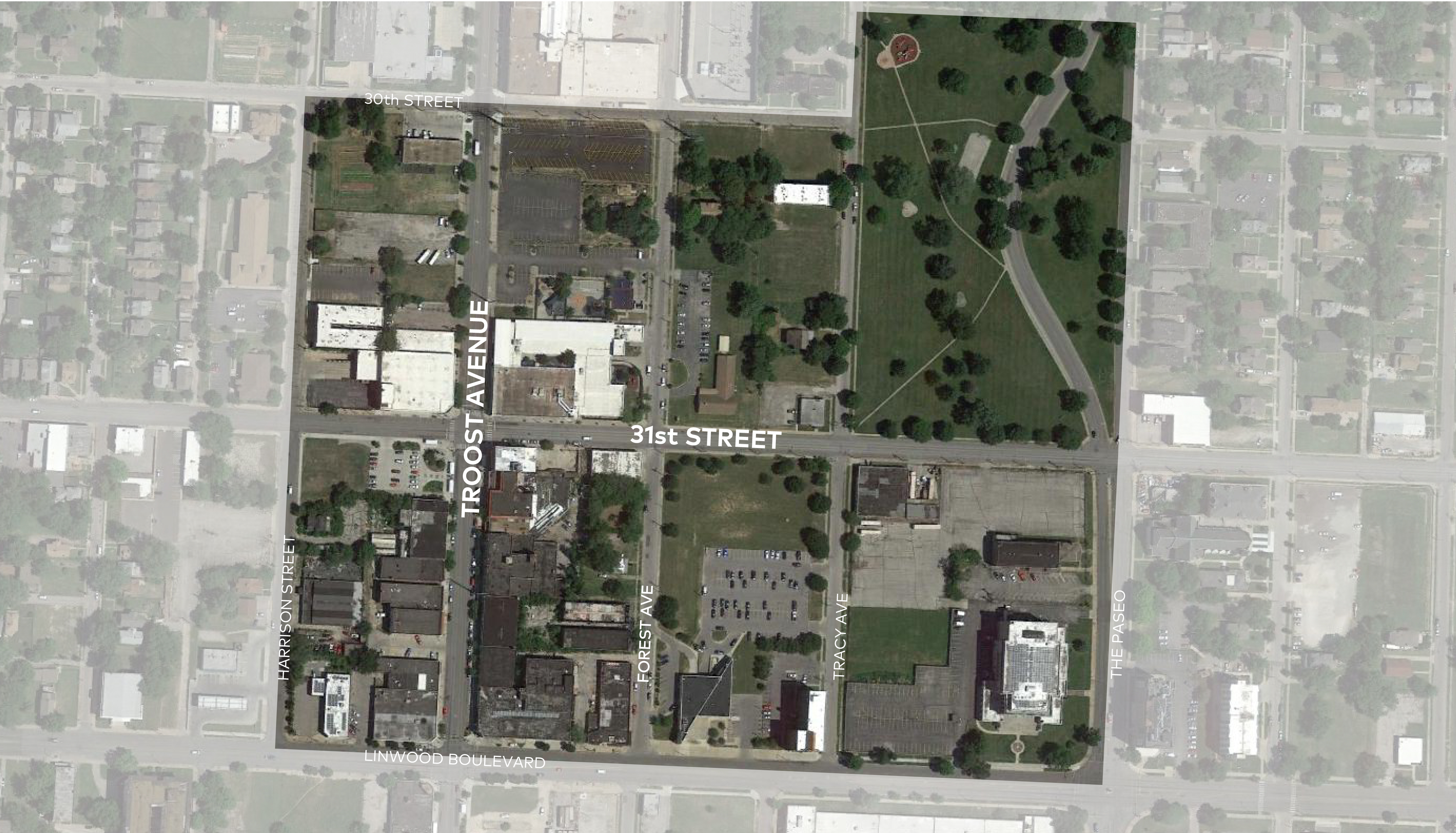
PICTURED: 31ST AND TROOST PRIORITY AREA BOUNDARY MAP.
The BNIM team held joint and separate community meetings with stakeholder groups. This strategy allowed for exploration of each group’s specific issues and concerns. Some highlights from stakeholder group meetings included:
Neighborhood groups desired mixed-income housing, neighborhood-serving retail and amenities, safer neighborhoods, and programmed youth activities. Many in the group welcomed new development and construction but still had concerns about the impact on low-income, fixed-income, and long-term residents.
Non-profit organizations sought better coordination among the different groups to fill gaps in services and an on-going ability to continue to support their mission and the people they serve.
Developers expressed that more parking was needed to attract anchor tenants, and that a Community Improvement District (CID) would also help support redevelopment efforts.
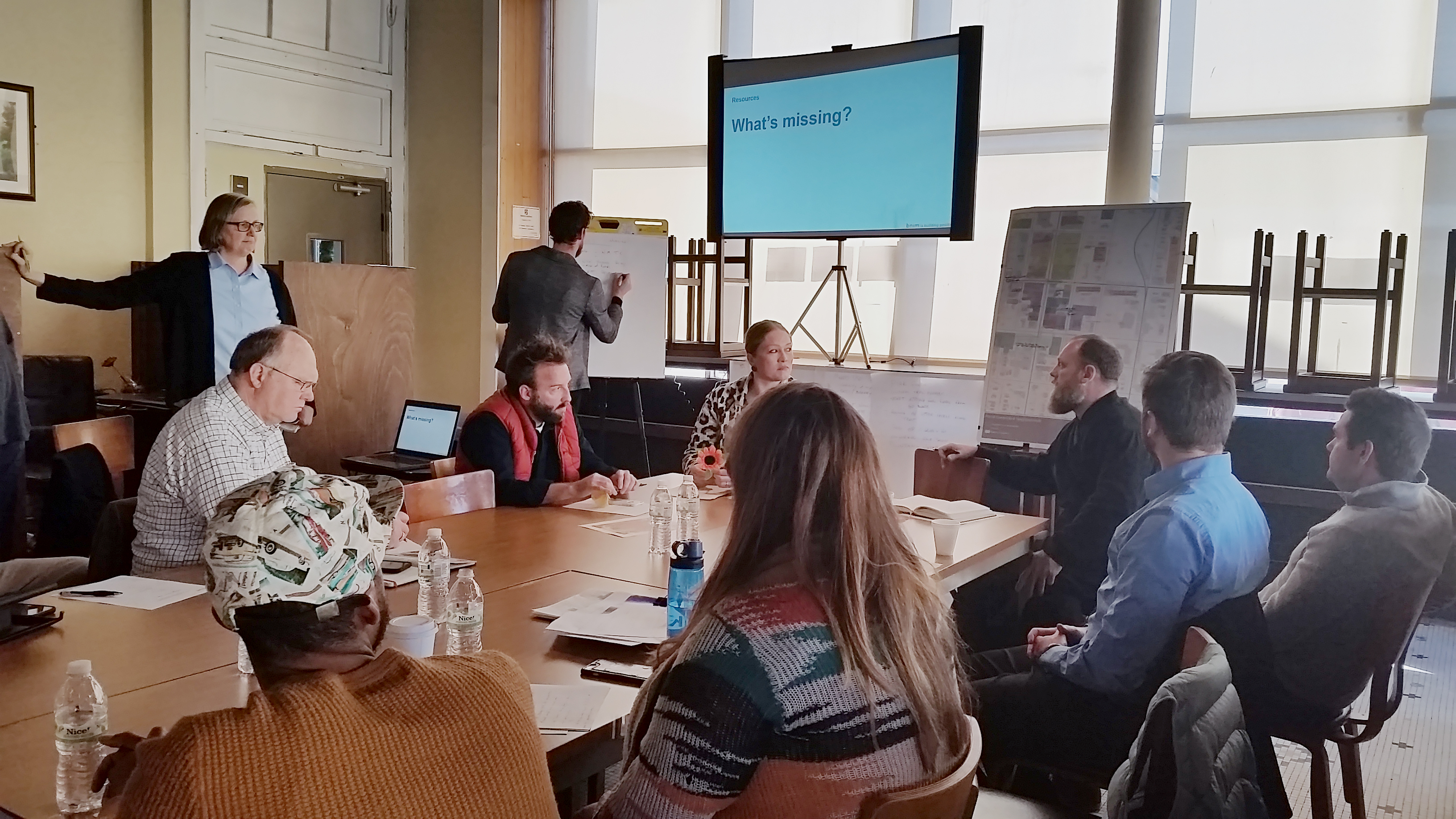
PICTURED: A COMMUNITY / STAKEHOLDER ENGAGEMENT MEETING AT RECONCILIATION SERVICES.
While there was some tension between stakeholders, the combined community outreach meetings led to productive dialogue and real-time problem-solving.
GUIDING PRINCIPLES
The community and stakeholder dialogues also punctuated key themes critical to the area’s future and informed the Revitalization Scenario’s guiding principles, which include:
Reveal the history.
Troost is the home to a vibrant and often overlooked history. Redevelopment should support revealing this history.
Restore urban fabric.
The priority area was once fully built out reflecting a strong urban core. Today there are more vacant lots and surface parking than built structures. An increase in density would support spaces to work and play, and support an increased sense of safety, health, and well-being.
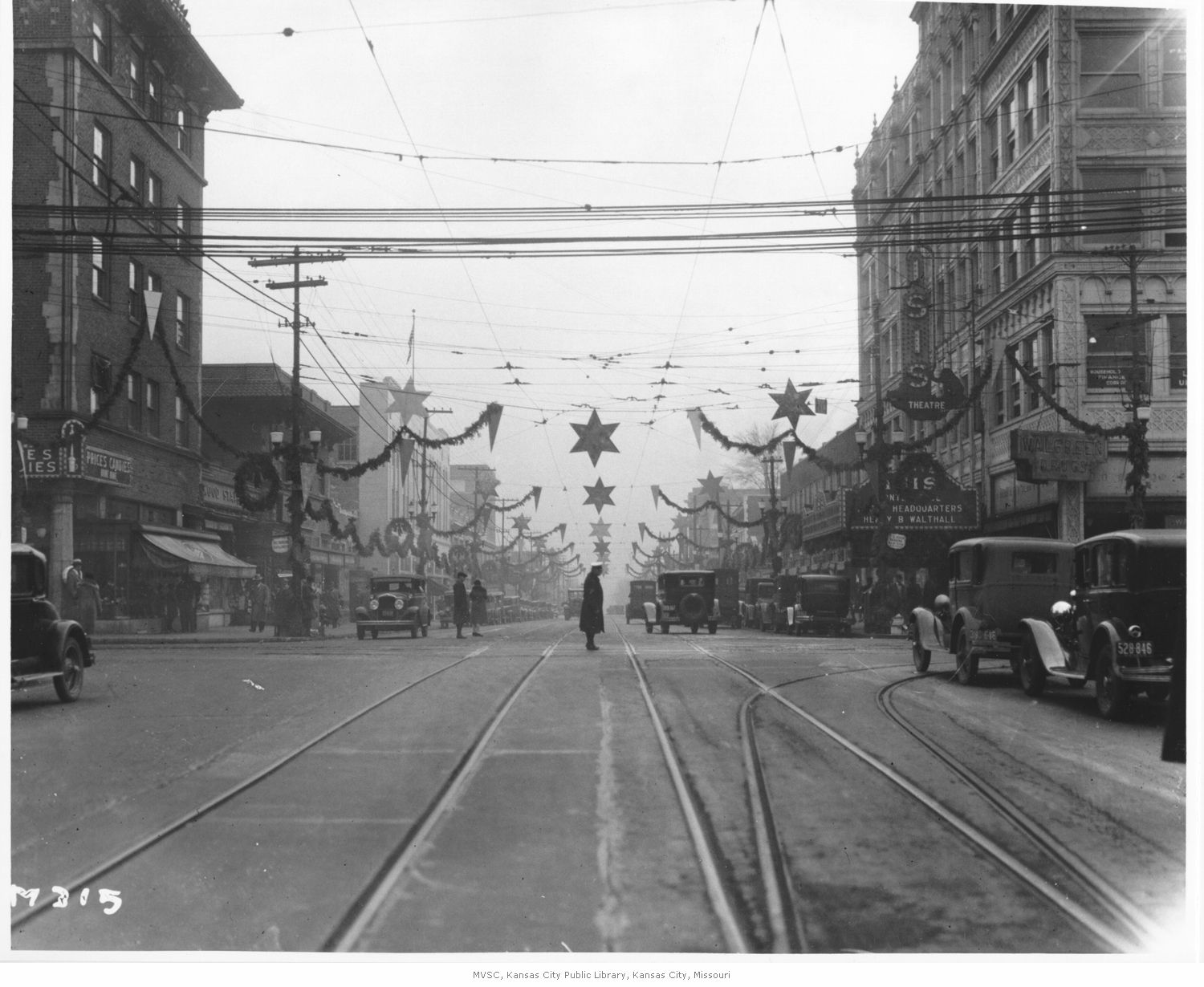
PICTURED: TROOST AVENUE LOOKING SOUTH ACROSS THE 31ST STREET INTERSECTION, CIRCA 1929. PHOTO COURTESY OF MISSOURI VALLEY SPECIAL COLLECTIONS, KANSAS CITY PUBLIC LIBRARY.
Revitalize a Troost retail zone.
The restoration of historic structures, the addition of neighborhood-serving retail options, and ensuring there are walkable streets will support a strong commercial corridor.
Develop mixed-income housing.
There are clear opportunities to demonstrate exemplary policies that support mixed-income housing and prevent displacement through innovative measures using both mandates and incentives.
Create a generous public realm.
The creation of a generous public realm, such as walkable and safe streetscapes and utilized public parks, is the backbone of an active community. Ensuring quality within the public realm is part of future development is critical for sustained future success.
Support health and wellness.
All new development should have an eye toward improving health and wellness for residents, workers, and visitors. From planting more trees to attracting healthy food options, community health solutions are a priority.
Support small business development and job creation.
Each step toward the area’s redevelopment should actively and intentionally include opportunities for small businesses and jobs for residents.
Grow community capacity.
It is critical that the redevelopment effort is diverse and equitable across all socio-economic strata and that all voices are lifted and heard from the beginning.
PLAN DEVELOPMENT + IMPLEMENTATION STRATEGIES
Through community stakeholder input and insights, BNIM identified redevelopment opportunities and specific catalytic projects, each intended to serve immediate community needs and provide a healthy mix of uses.
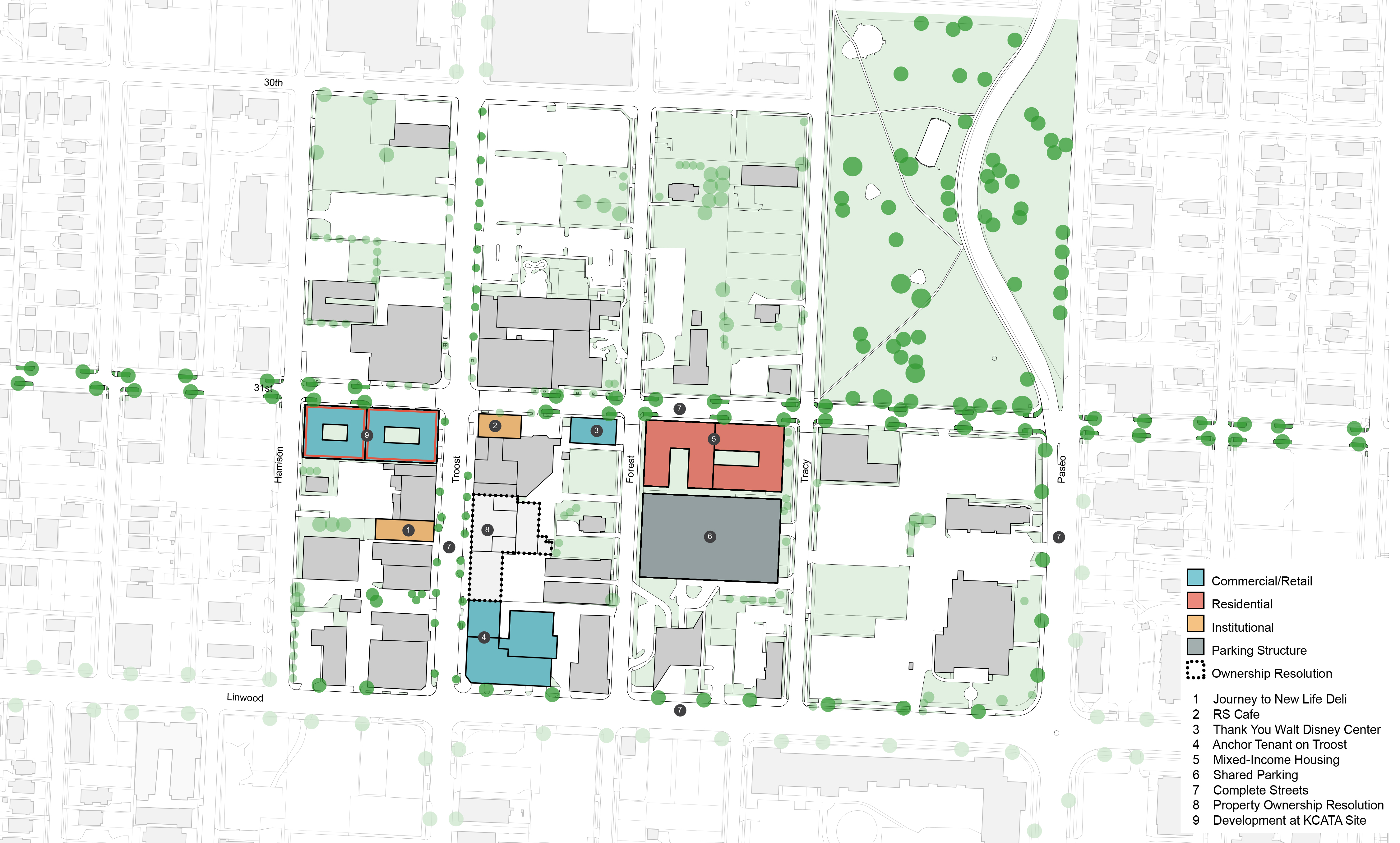
PICTURED: KC-CUR 31ST AND TROOST REVITALIZATION SCENARIO CATALYTIC PROJECT MAP.
BNIM’s team outlined 32 implementation strategies intended to guide, support, and assist in fully realizing the catalytic projects and development opportunities. These strategies detail next steps, including timeframe, costs, and champions and partners, and are being coordinated by KC-CUR Project Manager Daniel Serda. Examples include: advocate for mixed-income in the city’s housing policy; provide after-hours social services guide and program; and provide direct access to jobs.
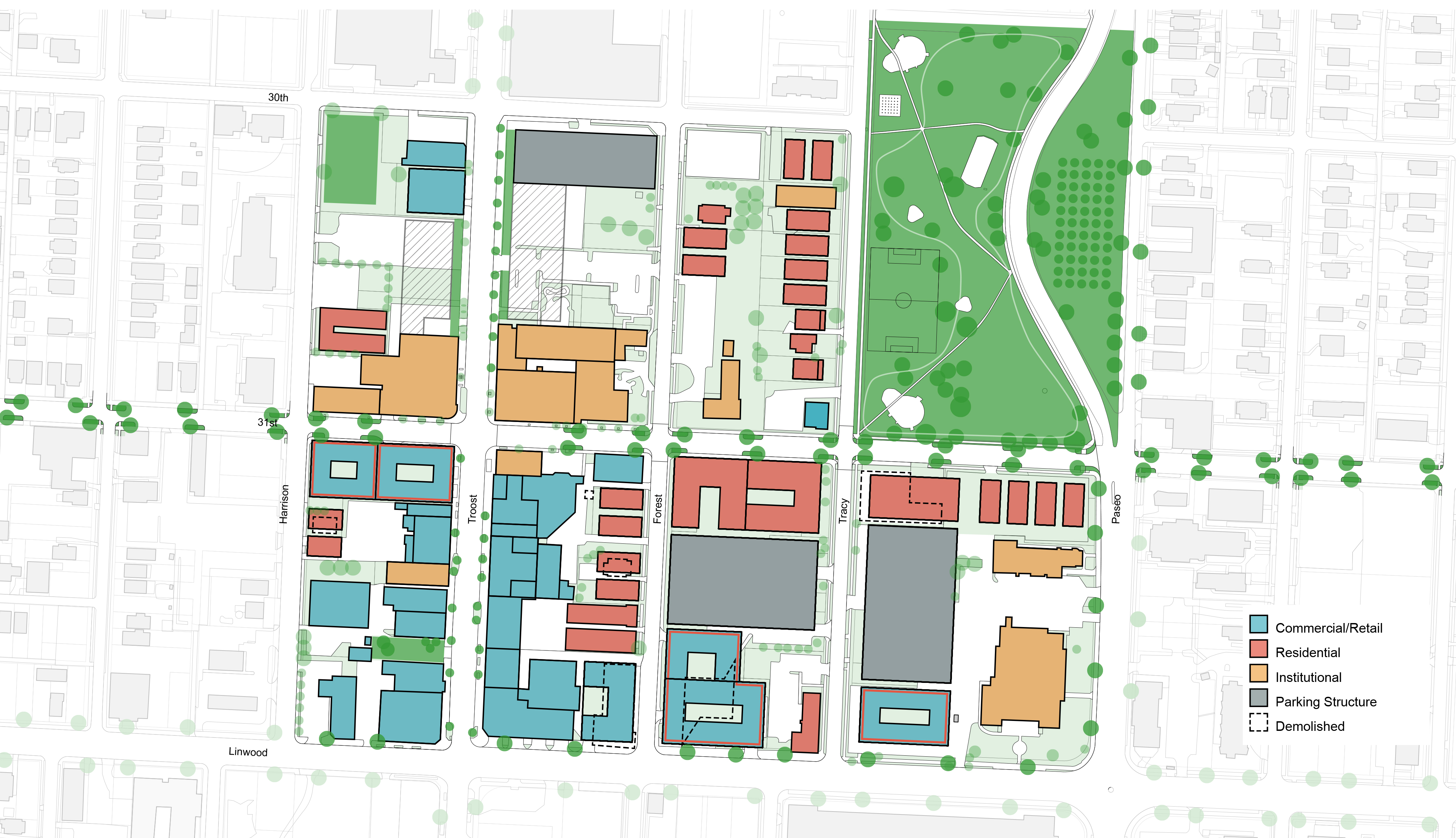
PICTURED: KC-CUR 31ST AND TROOST REVITALIZATION SCENARIO PROPOSED DEVELOPMENT STRATEGY.
MOVING FORWARD
Strong, affordable, defiant, healthy, creative. –COMMUNITY STAKEHOLDER VISION
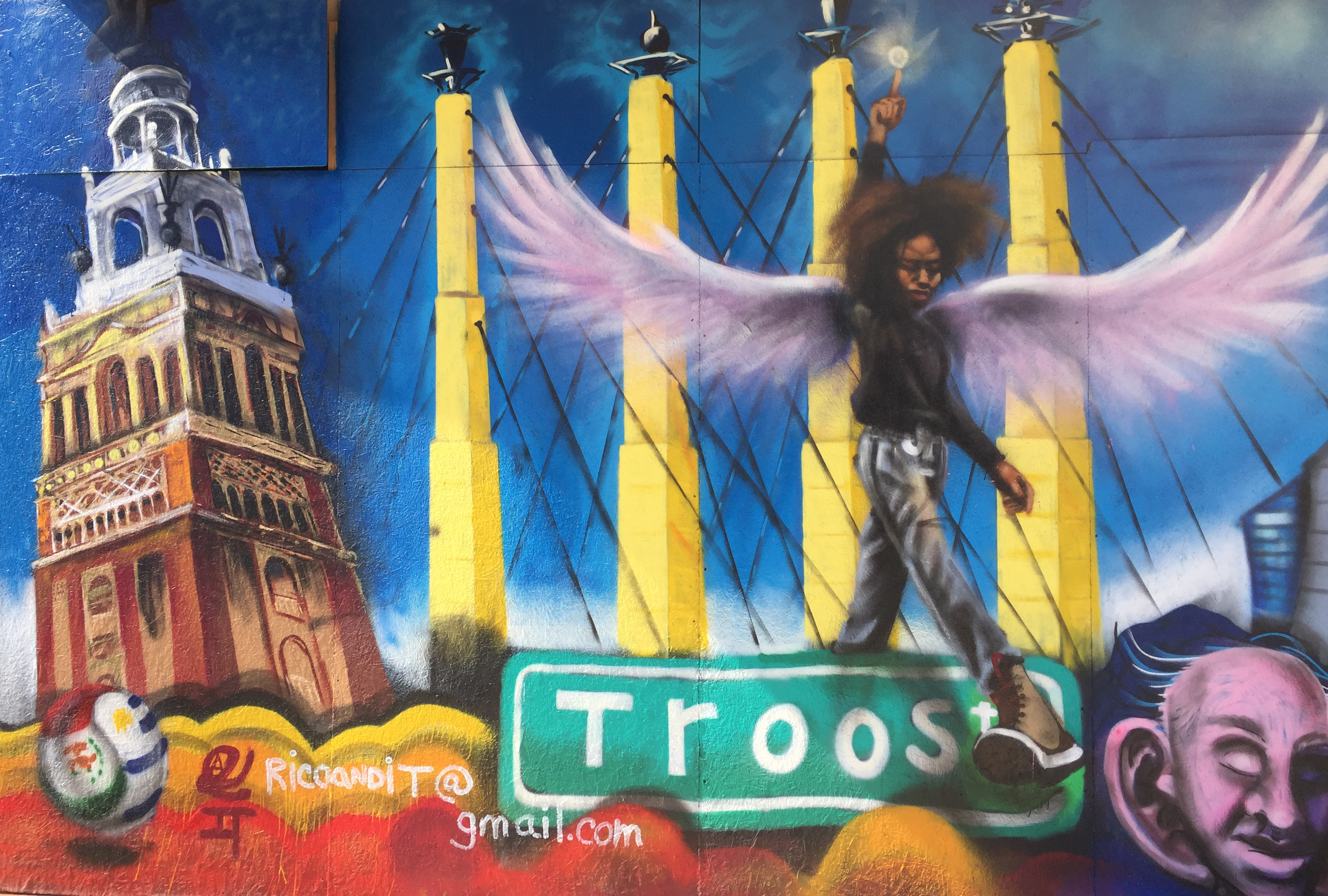
The 31st and Troost priority area has become a recent flashpoint. The Kansas City Star has reported in-depth on the neighborhoods’ on-going transformation and its impact on current residents. The editorial board has lamented some of the new development as “Denver-ization”, prompting mocking by some. Many people have passionate opinions about the neighborhood and what it signals for Kansas City moving forward.
The Revitalization Scenario is a plan that needs to merge with on-going development. The Scenario accounts for the neighborhoods’ rich but complicated history, blending the visions of several stakeholder groups into a unified and detailed plan. This moment marks a distinct transition from the pattern of disinvestment that has pervaded this area for decades. As Kansas City and the neighborhoods surrounding 31st and Troost make that transition, there is a need to define what is and how we do “good.” The Revitalization Scenario for the 31st and Troost KC-CUR Priority Area tries to do just that.
